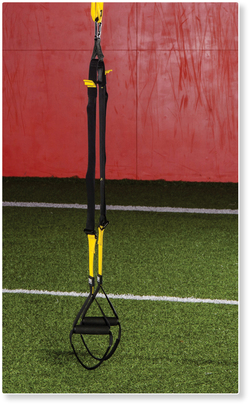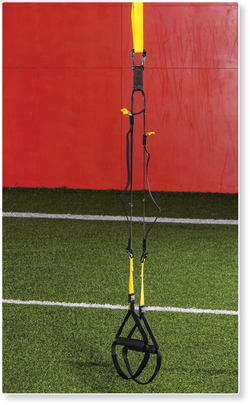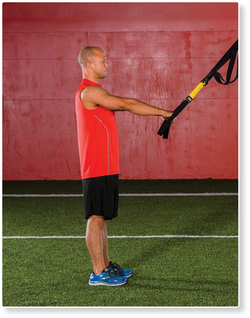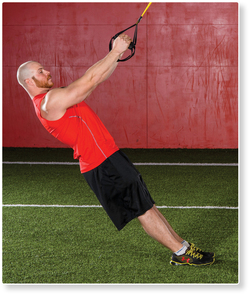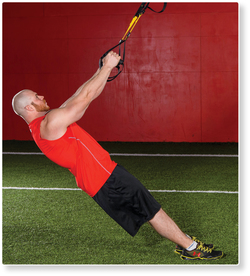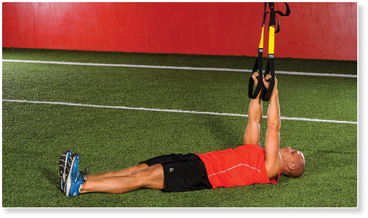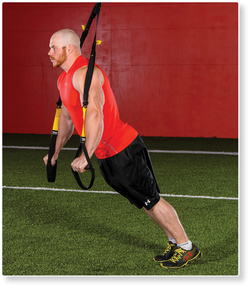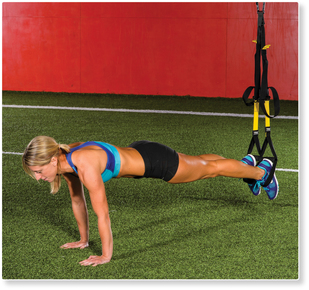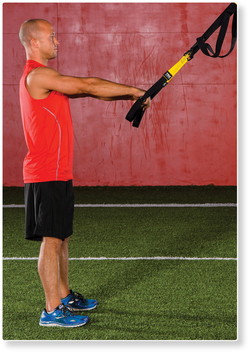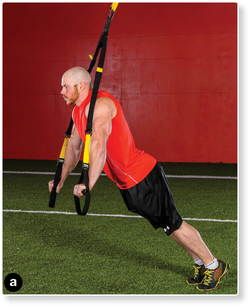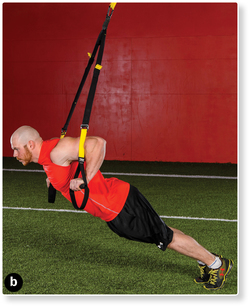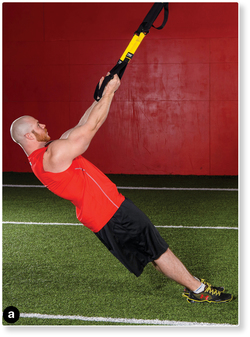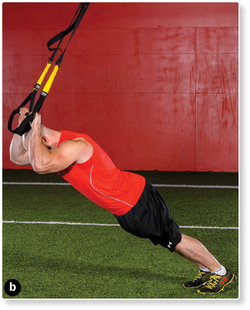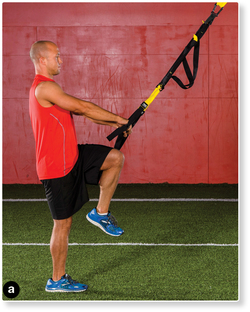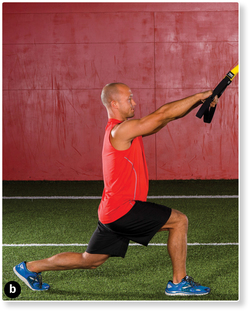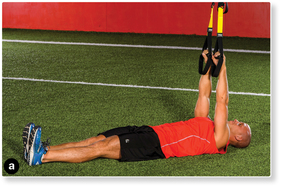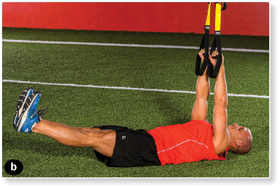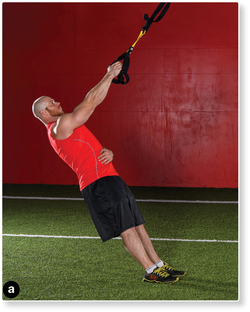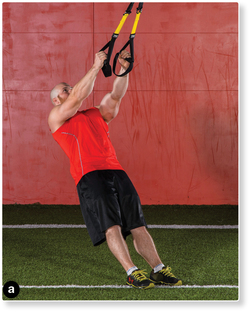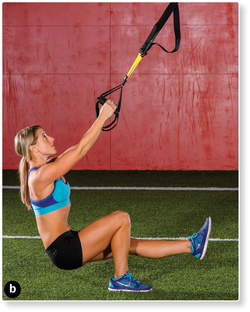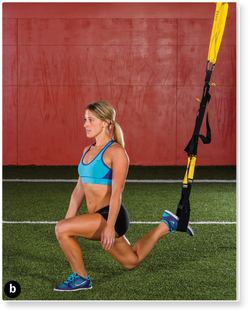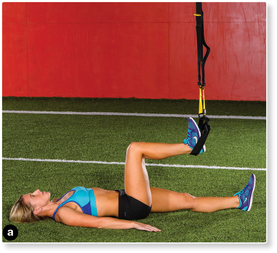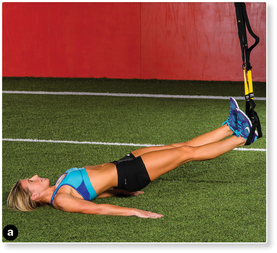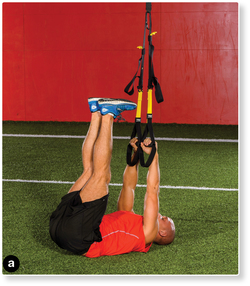The use of the suspension trainer has exploded in the fitness industry over the last 10 years. For the most part, suspension-training exercises are variations of bodyweight exercises (bodyweight push-up, squat, lunge, and so forth) with part of the body suspended in the air by the trainer. The suspension trainer is not fixed; all of its parts move in space while the exercise is being performed. For that reason, you must recruit more muscles to perform the movement and stabilize yourself. Using a suspension trainer increases the involvement of the muscles of the core, shoulders, and glutes to perform this stabilizing movement. A tremendous variety of exercises can be performed with the suspension trainer, which helps to keep workouts interesting. The suspension trainer is easily portable, so it’s ideal for workouts for those who are on vacation or deployed to remote areas.
Suspension training does have drawbacks. First, these exercises are difficult to learn. They require so much balance and stabilization that even simple exercises like a push-up take time to master. Second, because all the parts of the suspension trainer move in space, safety is a concern. For example, if you are performing a push-up and your hands are in the trainer, allowing one of the hands to move suddenly could be a recipe for a shoulder injury. Third, suspension-training units tend to be expensive, costing upward of $200 each. Finally, suspension training has built-in overload challenges. After you have finished learning and have developed your fitness base, making the exercises more challenging is difficult. You can always perform the exercises for longer periods, but in the case of athletics, you may be training the wrong energy systems and qualities. Because of that, suspension training is frequently integrated with other modes of exercise for an advanced person’s program (see table 7.1).

